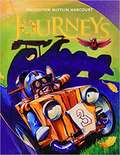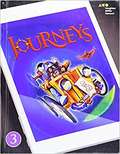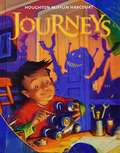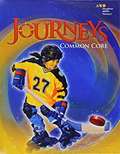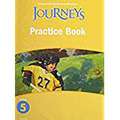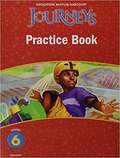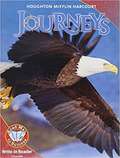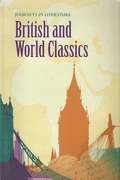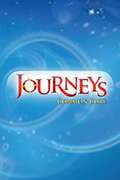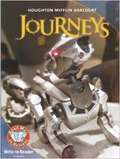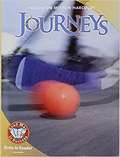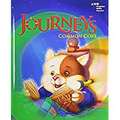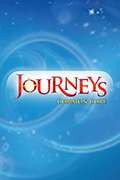- Table View
- List View
Journeys Grade 4
by Houghton MifflinYou're about to set out on a reading journey that will take you from the underwater world of a Japanese folktale to the American wilderness of Sacagawea in 1804. On the way, you'll learn amazing things as you become a better reader.
Journeys Grade 5
by Houghton Mifflin HarcourtJourneys is a research-based, comprehensive English Language Arts program designed to provide solid instruction that is clear and focused with realistic pacing and manageable resources.
Journeys Grade 6: Practice Book
by Houghton Mifflin HarcourtJourneys: Practice Book Consumable Grade 6
Journeys Grade 6: Tier 2 Write-in Reader
by Houghton MifflinLearn more about good writing by practicing with this book.
Journeys I (Passport Reading)
by VoyagerThe book facilitates conversion of reading skills into day to day activities.
Journeys In Literature British and World Classics
by Tim Mansfield Stephanie Shaw Joel Storer Elia Ben-Ari Mary DesmondJourneys In Literature British and World Classics by Tim Mansfield, Stephanie Shaw, Joel Storer, Elia Ben-Ari, and Mary Desmond.
Journeys NCC Grade 4 (Student Edition)
by Houghton MifflinJourneys NCC Student Edition Grade 4 by Houghton Mifflin
Journeys Readers Notebook, Volume 2 Grade 3
by Houghton Mifflin HarcourtExercises to strengthen your understanding of what you've read and how grammar works.
Journeys Through Space, Unit 4: Patterns in the Sky
by Wright Group/McGraw-HillNIMAC-sourced textbook
Journeys Tier 2 Grade 4: Write-in Reader
by Houghton Mifflin HarcourtThis Road Map to Success contains 30 lessons in 6 units.
Journeys Workbook (Grade #4)
by Houghton MifflinThis book contains Units 1-5 Reading Adventures & Unit 6 Paths to Discovery.
Journeys Write-in Reader Grade 5
by Houghton Mifflin HarcourtThe Houghton Mifflin Harcourt Journeys Tier 2 Write-in Reader contains a lot of enjoyable reading materials for grade 5.
Journeys [Grade 1, Volume 1], Common Core
by David J. Chard James F. Baumann Jamal CooksNIMAC-sourced textbook
Journeys [Grade 1, Volume 2], Common Core
by David J. Chard James F. Baumann Jamal CooksNIMAC-sourced textbook
Journeys [Grade 1, Volume 3], Common Core
by David J. Chard James F. Baumann Jamal CooksNIMAC-sourced textbook
